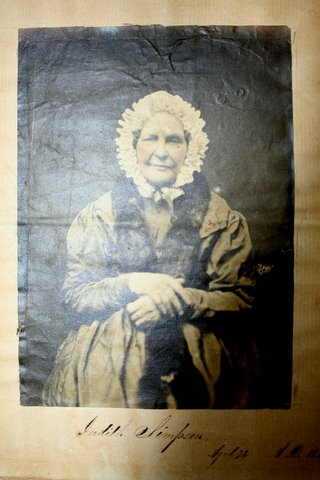Sign up for the Family Tree Newsletter Plus, you’ll receive our 10 Essential Genealogy Research Forms PDF as a special thank you!
Get Your Free Genealogy Forms
"*" indicates required fields
In 2005, I surmised that Pek’s image was a salted paper print, but I didn’t have proof. At the time, he didn’t have a scan and lived too far away for me to see the original. This week, however, he sent me this lovely scan. It clearly shows the thin paper image and the heavier paper backing.
(By the way, I’ve made several attempts to even up the contrast without any luck. The surface of the paper is shiny and reflects the light from the scanner.)
Pek also sent me proof that I’d identified the photo correctly: results from tests on the image. Using an electron microscope, a scientist had captured an X-ray spectrum of a fragment of the image that clearly indicated it’s a salted paper print. The testing showed that the paper contained not only sodium and magnesium, but also traces of bromine—which the scientist says was an experimental additive at the time. His report concluded that, although there’s no way to confirm the picture’s date from this testing, the results are consistent with 1848.
That’s the year on the image. Pek continues to look for evidence that this is Judith Simpson, a woman who appears in Quebec records. If the name and age are correct, Simpson was born about 1774.
Salted paper prints date from 1840 to circa 1860—the same era as silver-plate daguerreotypes. Interestingly, the pricier daguerreotype images were more popular than paper prints in the 1840s and 1850s, at least in America.
The most charming part of this portrait is Simpson’s attire. Her clothing reflects fashions of the 1830s, not the late 1840s when she sat for this picture. It’s clear proof that not everyone dressed in the latest fashion for their portraits—so it’s important to consider all the clues in an image.
ADVERTISEMENT





